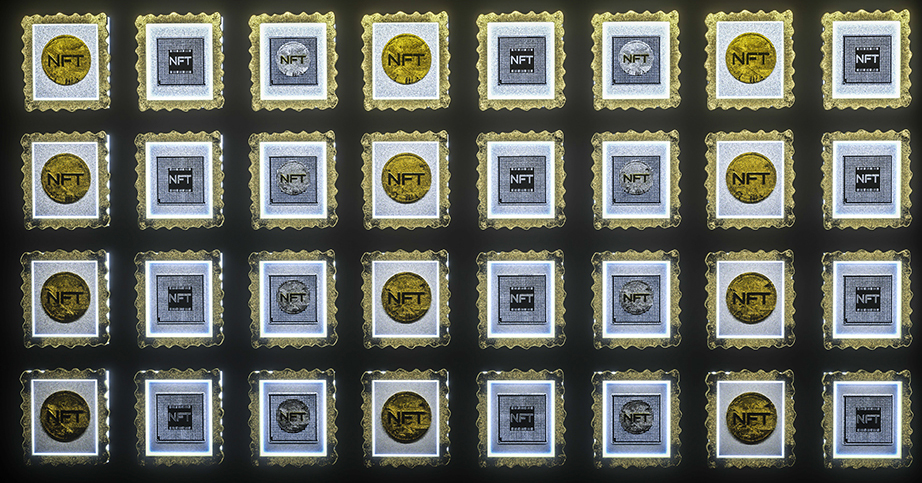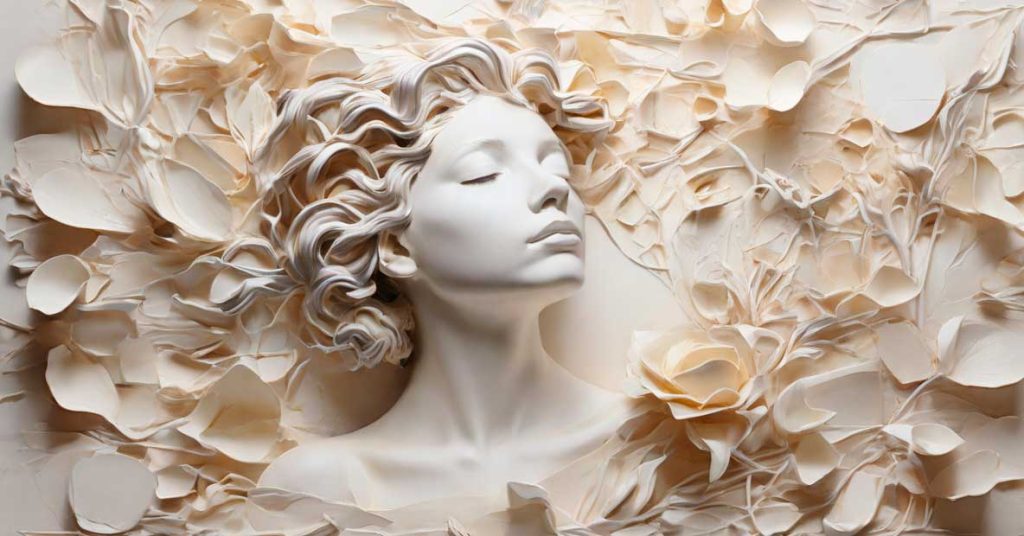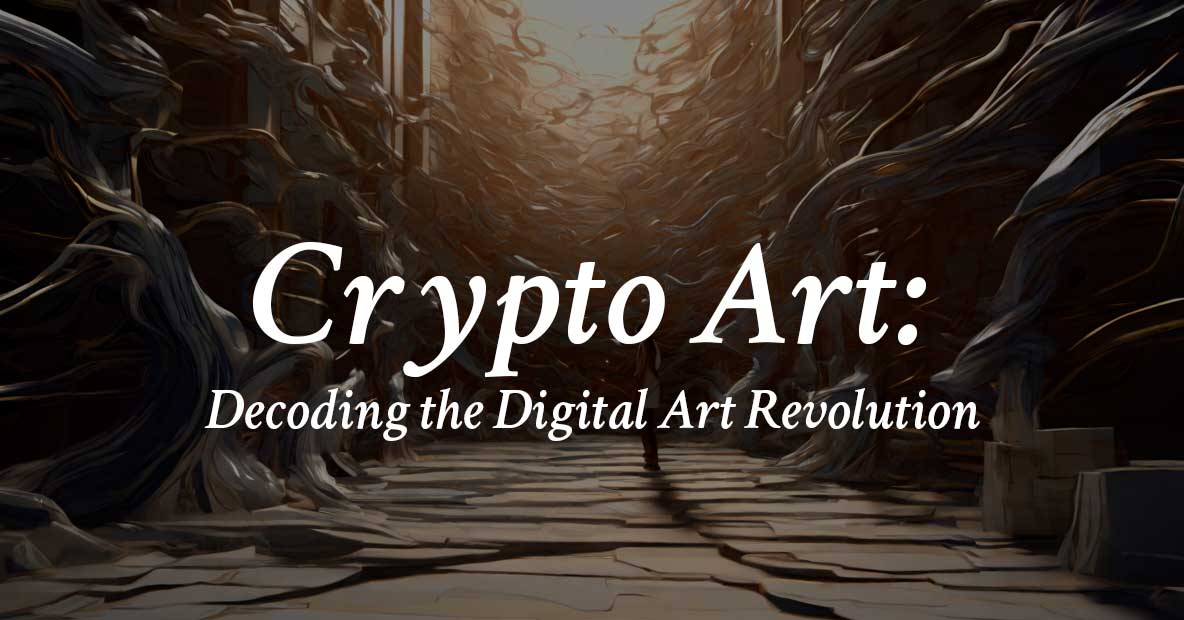
Introduction
Have you ever wondered what it would be like to own a piece of digital art that is unique, scarce, and verifiable? Imagine being able to collect, trade, and display artworks that exist only in the virtual realm, but have real value and significance. This is the promise of crypto art, a new form of art that is powered by blockchain technology and revolutionizing the art world. In this article, we will explore the fascinating world of crypto art, and learn how to understand, create, collect, and invest in this emerging art form. We will also discuss the future of crypto art, and how it will shape the art landscape and the cultural sphere in the years to come.
What is Crypto Art
Crypto art is a term that refers to digital artworks that are created, distributed, and traded using blockchain technology. Blockchain is a system of storing and transferring data in a decentralized, secure, and transparent way. Blockchain allows artists to create digital tokens, called non-fungible tokens (NFTs), that represent their artworks and prove their ownership and authenticity. NFTs are unique and indivisible, meaning that they cannot be copied, divided, or interchanged. NFTs also have metadata, such as the artist’s name, the date of creation, and the history of transactions, that are permanently recorded on the blockchain.
Crypto art disrupts the traditional art world by challenging established notions of value, ownership, and authenticity. Artists can bypass intermediaries like galleries and auction houses, engaging directly with collectors and fans. The democratization of art ownership is a key feature, allowing anyone with internet access and a digital wallet to participate in buying and selling crypto artworks. Unrestricted by physical boundaries, crypto art can be showcased and appreciated on various digital platforms, including websites, social media, and virtual reality.
Understanding Crypto Art
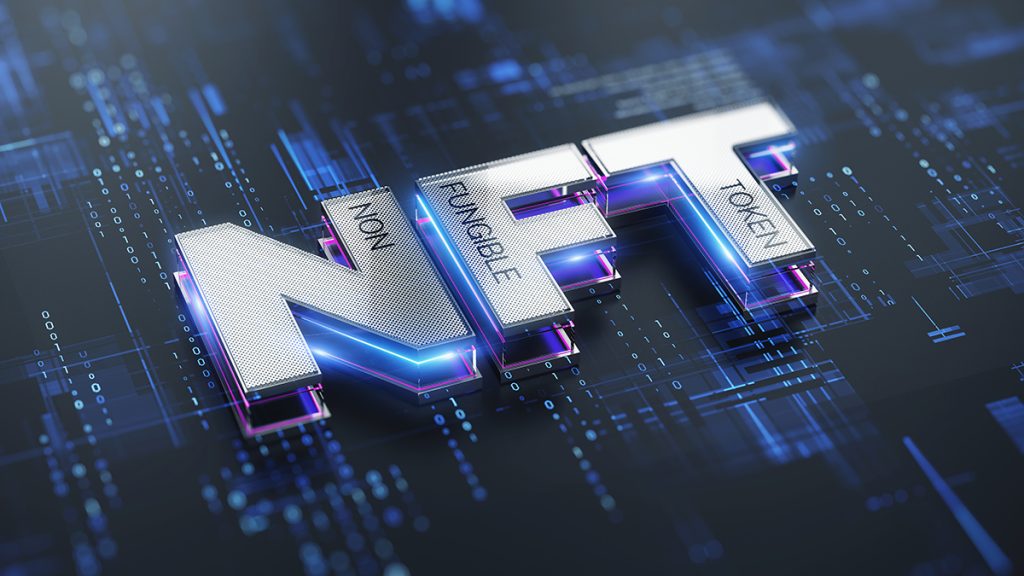

Demystifying NFTs
The key concept behind crypto art is the use of non-fungible tokens (NFTs) to represent digital artworks. NFTs are a type of cryptocurrency that are different from the usual ones, such as Bitcoin and Ethereum. While cryptocurrencies are fungible, meaning that they are identical and interchangeable, NFTs are non-fungible, meaning that they are unique and irreplaceable. For example, one Bitcoin is equal to another Bitcoin, but one NFT is not equal to another NFT.
NFTs are created using smart contracts, which are self-executing agreements that are written in code and stored on the blockchain. Smart contracts allow artists to define the rules and parameters of their artworks, such as the number of editions, the royalties, and the rights. Smart contracts also ensure that the artworks are automatically transferred to the buyers once the payment is made, without the need for third parties or intermediaries.
NFTs are the backbone of crypto art, as they provide a way to establish ownership and scarcity of digital artworks. Unlike traditional digital artworks, which can be easily copied and shared, NFTs are unique and traceable, and cannot be duplicated or tampered with. NFTs also create a digital provenance, which is a record of the origin and history of the artworks, that can be verified by anyone on the blockchain. NFTs give value and legitimacy to digital artworks, and create a new market for collectors and investors.
Exploring the Crypto Art Ecosystem
The crypto art ecosystem consists of various platforms and communities that enable the creation, distribution, and trading of crypto artworks. The main platforms are the crypto art marketplaces, which are online platforms where artists can mint, sell, and showcase their artworks, and where collectors can buy, bid, and discover new artworks. Some of the most popular crypto art marketplaces are:
Nifty Gateway
A platform that allows users to buy and sell crypto artworks using credit cards or cryptocurrencies. Nifty Gateway features curated collections of artworks from renowned artists, such as Beeple, Pak, and Trevor Jones, as well as emerging artists. Nifty Gateway also hosts regular drops, which are limited-time sales of exclusive artworks that often sell out in minutes.
SuperRare
A platform that focuses on high-quality, single-edition artworks that are verified by the platform’s curators. SuperRare features artworks from some of the most influential crypto artists, such as Frenetik Void, XCOPY, and Hackatao, as well as new and upcoming artists. SuperRare also has a social network aspect, where users can follow, like, and comment on their favorite artists and artworks.
OpenSea
A platform that offers a wide range of crypto artworks and collectibles, such as digital cards, games, and memes. OpenSea allows users to create their own collections and customize their own storefronts. OpenSea also supports various types of NFTs, such as ERC-721 and ERC-1155, which are different standards of smart contracts.
Other crypto art platforms include Rarible, Foundation, KnownOrigin, Async Art, and MakersPlace, Mintone each with its own features and specialties. The crypto art ecosystem also includes various tools and services that help artists and collectors, such as Metamask, a browser extension that allows users to interact with blockchain applications; IPFS, a decentralized storage system that hosts the digital files of the artworks; and CryptoArt.io, a website that tracks and analyzes the crypto art market.
Types of Crypto Art
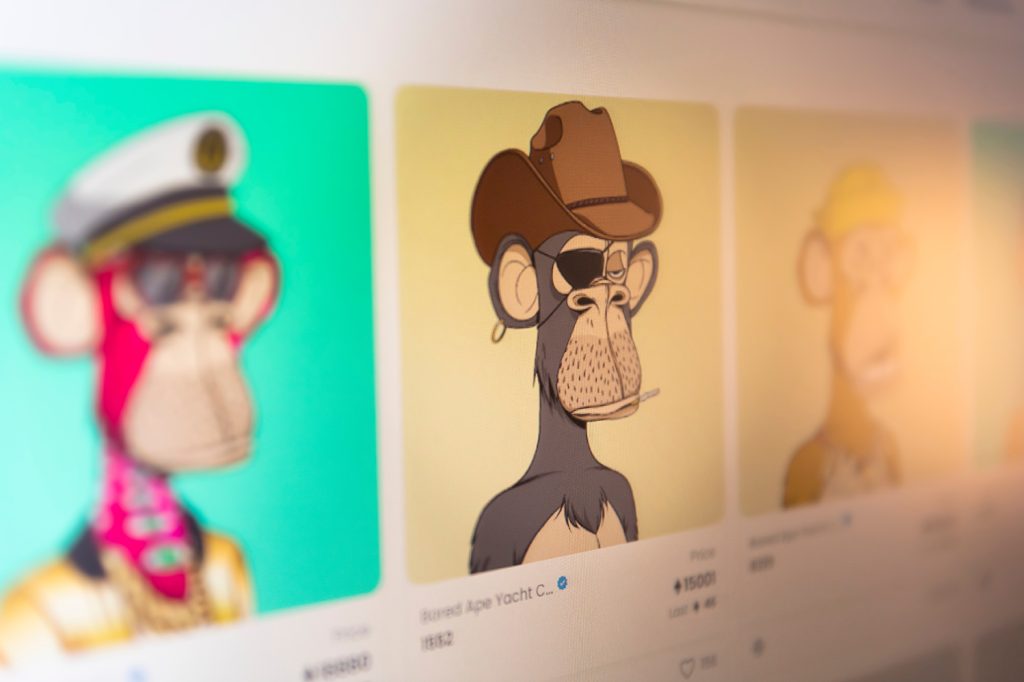

Crypto art is a diverse and dynamic field, where artists can experiment with different styles, techniques, and formats. Crypto art can be classified into different types, depending on the medium, the content, and the functionality of the artworks. Some of the most common types of crypto art are:
Pixel Art
A type of crypto art that uses pixels, or small dots of color, to create retro-style images. Pixel art is inspired by the aesthetics of video games and digital art from the 1980s and 1990s. Pixel art is often colorful, playful, and nostalgic, and can feature characters, scenes, and icons from popular culture. Some of the most prominent pixel artists in the crypto art scene are PXLpet, Alotta Money, and Coldie.
3D Art
A type of crypto art that uses three-dimensional modeling and rendering to create realistic and immersive images. 3D art can range from abstract and geometric shapes to detailed and lifelike objects and environments. 3D art can also incorporate animation, lighting, and sound effects to enhance the visual experience. Some of the most notable 3D artists in the crypto art space are Fvckrender, Giant Swan, and Oseanworld.
Digital GIFs
A type of crypto art that uses animated images, or GIFs, to create dynamic and expressive artworks. Digital GIFs can capture movement, emotion, and humor, and can convey complex and layered messages. Digital GIFs can also loop endlessly, creating a hypnotic and mesmerizing effect. Some of the most popular digital GIF artists in the crypto art community are XCOPY, LuluxXX, and Mushbuh.
Interactive Experiences
A type of crypto art that uses interactive elements, such as buttons, sliders, and sensors, to allow users to participate and influence the artworks. Interactive experiences can create a sense of agency, engagement, and fun, and can also challenge and provoke users to think and act differently. Interactive experiences can also leverage blockchain technology to create dynamic and generative artworks that change over time or based on external factors. Some of the most innovative interactive artists in the crypto art world are Pak, Async Art, and Matt Kane.
Embracing the Crypto Art Movement
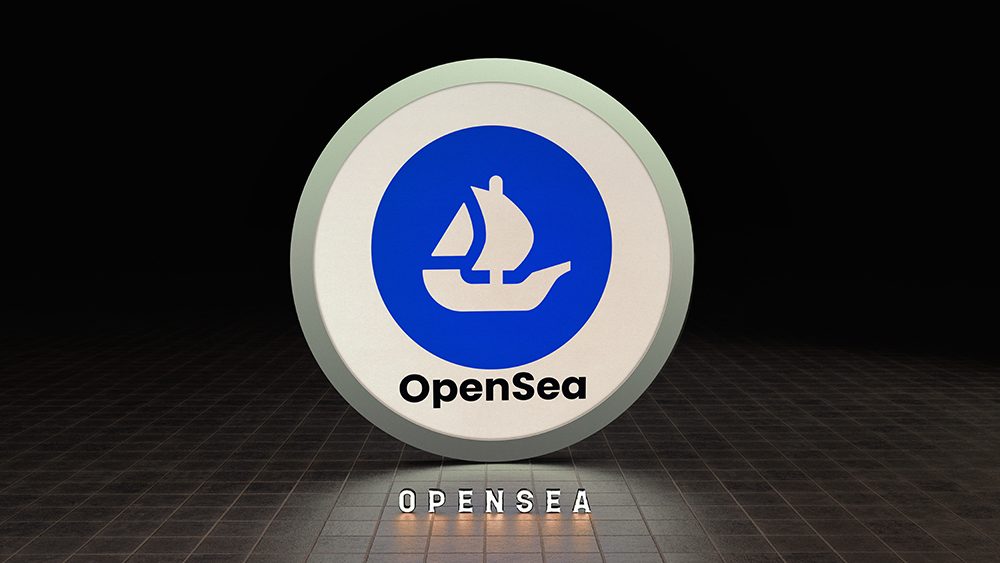

Creating Crypto Art
If you are an artist who wants to create your own crypto art, you will need to follow some steps and use some tools to make your artworks and sell them on the crypto art marketplaces. Here are the basic steps to create crypto art:
Create your digital artwork
Feel free to utilize familiar digital tools like Photoshop, Illustrator, Blender, or Procreate to craft your digital artwork. Alternatively, employ traditional tools such as pen and paper, later digitizing your creation through scanning or photography. The key is to produce original artwork that doesn’t violate any intellectual property rights, offering flexibility in the type of artwork you create.
Choose your platform
Select a crypto art platform for minting and selling your artwork, either from the mentioned options or others aligning with your style. Create an account on the chosen platform, complete identity verification, and verify your email address. Connect your digital wallet to facilitate seamless receipt of payments and storage for your artworks.
Mint your artwork
Minting involves creating an NFT that signifies your artwork and uploading it to the blockchain. Provide details like title, description, edition number, and price for your artwork. Choose the smart contract type (e.g., ERC-721 or ERC-1155) and the blockchain network (e.g., Ethereum or Polygon). Pay a gas fee for minting, contingent on network conditions and artwork complexity. Your minted artwork will then be available for sale on the platform and visible to all on the blockchain.
Promote your artwork
To draw in buyers and collectors, promoting your artwork and establishing yourself as a crypto artist is crucial. Leverage social media like Twitter, Instagram, and Discord to share your creations and engage with your audience. Joining crypto art communities such as CryptoArtNet, CryptoArtists, and CryptoArtNews offers networking opportunities with fellow artists. Active participation in events, including exhibitions, auctions, and contests, provides a platform to showcase your work and enhance visibility.
Collecting Crypto Art
If you are a collector who wants to buy and own crypto art, you will need to follow some steps and use some tools to find, purchase, and display your artworks. Here are the basic steps to collect crypto art:
Get a digital wallet
You will need a digital wallet to store your cryptocurrencies and your NFTs. A digital wallet is a software or hardware device that allows you to send and receive cryptocurrencies and NFTs securely and conveniently. You can choose from various types of digital wallets, such as web, mobile, desktop, or hardware wallets, depending on your preferences and needs. Some of the most popular digital wallets for crypto art are Metamask, Trust Wallet, and Ledger.
Choose your platform
Selecting a crypto art platform for purchasing and browsing artworks is the initial step. Choose from the mentioned platforms or explore alternatives aligning with your preferences and budget. Create an account on the chosen platform, complete identity verification, and verify your email address. Connect your digital wallet to facilitate payments and artwork receipts seamlessly.
Buy your artwork
Acquiring crypto artworks offers various methods based on the platform and artwork. Opt for fixed-price purchases, where the price is set by the artist or platform. Engage in auctions by bidding, where the highest bidder secures the artwork. Alternatively, negotiate offers directly with the seller. Use different cryptocurrencies like Ethereum, Bitcoin, or Dai, depending on the platform and artwork. Be prepared to pay a gas fee, varying with network congestion and artwork complexity. Upon purchase, the artwork is transferred to your digital wallet, visible to all on the blockchain.
Display your artwork
Presenting your crypto artworks offers various options based on your preferences and devices. Use digital devices like your computer, phone, or tablet with NFT-supporting apps or websites such as Nifty Gateway, SuperRare, or OpenSea. Display artworks on physical devices like your TV, monitor, or digital frame using connecting devices or apps like Infinite Objects, Framed, or NFTfi linked to your digital wallet. Additionally, explore virtual reality display options through platforms or apps supporting VR, such as Decentraland, Cryptovoxels, or Somnium Space.
Investing in Crypto Art
If you are an investor who wants to make money from crypto art, you will need to follow some steps and use some tools to analyze, evaluate, and trade your artworks. Here are the basic steps to invest in crypto art:
Analyze the market
To navigate the crypto art market effectively, analyze trends, demand, and supply. Utilize tools like CryptoArt.io, NonFungible.com, and DappRadar for comprehensive market statistics and insights. Additionally, stay connected with the crypto art community and influencers on social media platforms like Twitter, Instagram, and Discord, keeping an eye on figures like Beeple, Pranksy, and WhaleShark, as they can influence market sentiment and behavior.
Evaluate the artworks
Assessing crypto artworks requires an evaluation of their value and potential. Utilize diverse criteria, including the artist’s reputation, artwork quality, rarity, provenance, and popularity. Employ tools like CryptoArt.ai, NFTBank.ai, and Nansen for comparative analysis, offering valuation and ranking services for crypto artworks.
Trade your artworks
Trading your crypto artworks offers diverse strategies based on your goals. You can hold artworks in your digital wallet, anticipating their value to appreciate. Alternatively, selling artworks involves transferring them to another buyer, yielding a profit or loss. Additionally, lending or borrowing artworks can serve as collateral for loans. Utilize platforms like Nifty Gateway, SuperRare, or OpenSea for primary and secondary markets, or explore lending and borrowing services on platforms like NFTfi, Aavegotchi, or NFTX to diversify your trading options.
The Future of Crypto Art
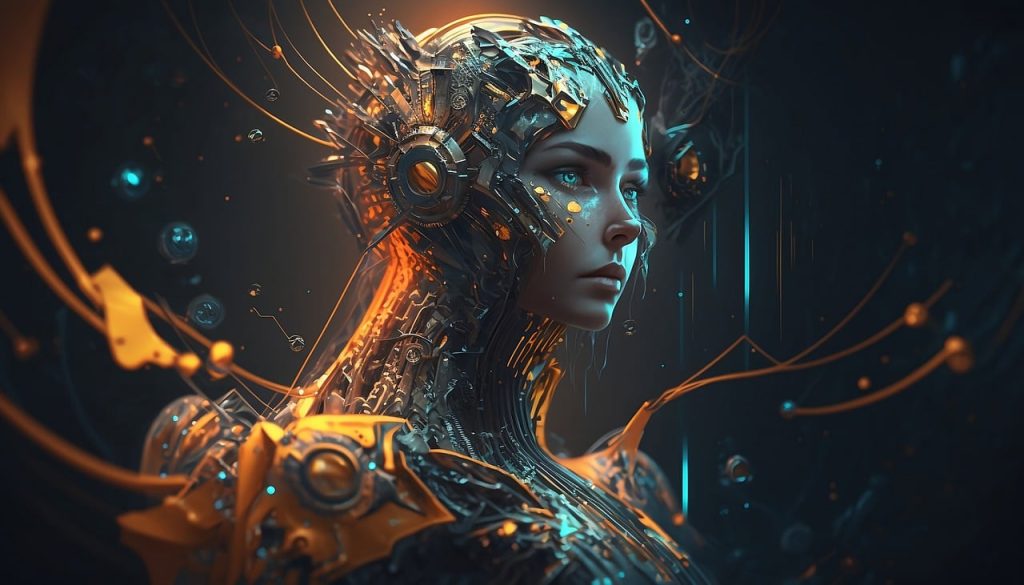

A dynamic and youthful domain, crypto art sees continual innovation and experimentation by artists, collectors, and investors exploring fresh possibilities. This swiftly growing and evolving field adapts to the dynamic interplay of technology, market dynamics, and cultural shifts, addressing new challenges and demands. Beyond being a novel art form, crypto art represents a distinct mode of expression, communication, and interaction, holding the transformative potential to reshape the art world and cultural landscape in various ways in the future.
Continued Growth and Adoption
The future of crypto art foresees sustained growth and expansion with increasing involvement from artists, collectors, and investors, enhancing its development and diversity. Anticipated recognition and acceptance from the mainstream art world and the general public are expected as institutions, organizations, and media outlets increasingly embrace and support crypto art. Furthermore, crypto art is poised to exert influence and inspiration across various art forms and cultures, potentially giving rise to new genres and styles of expression in areas like music, film, and literature.
Technological Advancements
Crypto art is expected to benefit from technological advancements in the future, as more platforms, tools, and services emerge and improve the crypto art experience and functionality. Crypto art is also expected to leverage technological advancements in other fields, such as blockchain interoperability, which will allow different blockchain networks to communicate and exchange data; augmented reality, which will allow users to overlay and interact with crypto artworks in the real world; and artificial intelligence, which will allow users to create and customize crypto artworks using algorithms and machine learning.
Social and Cultural Impact
In the future, crypto art is poised to reshape societal and cultural perspectives on art and interpersonal connections. By democratizing art ownership and access, it reduces barriers to entry and participation in the art market. Additionally, crypto art opens avenues for innovative artistic expression and collaboration, empowering artists to experiment with novel mediums and functionalities. This transformative influence extends to the creation of fresh social and cultural capital, fostering communities, networks, and identities within the realm of crypto art.
Conclusion
Crypto art, fueled by blockchain technology, is reshaping the art landscape. This innovative form enables artists to produce, distribute, and trade unique and verifiable digital artworks, fostering a diverse range from pixel art to interactive experiences. Beyond its current state, crypto art is a rapidly evolving field, adapting to technological advancements, market shifts, and cultural demands. More than a genre, it represents a new mode of expression, communication, and interaction, with the potential to significantly impact the art world and cultural spheres in the future through continued growth, technological advancements, and profound social and cultural influence.
FAQs
What is crypto art?
Crypto art refers to digital artworks represented as Non-Fungible Tokens (NFTs) on blockchain technology. These unique tokens ensure ownership, authenticity, and scarcity, distinguishing crypto art from traditional digital artworks. Artists tokenize their creations, providing a new paradigm for ownership and provenance.
How do I display crypto art?
Display options include using your computer, tablet, or smartphone on crypto art platforms, a dedicated device like a digital frame or smart TV, or immersive experiences with augmented or virtual reality devices.
Why is crypto art valuable?
Crypto art gains value due to uniqueness, scarcity, and verifiability through NFTs. Represented on the blockchain, crypto artworks cannot be easily copied, have limited supply, possess a digital provenance for verification, and hold artistic value reflecting the artists’ creativity.
What are the challenges and risks of crypto art?
The challenges of crypto art encompass technical hurdles like blockchain complexity, legal considerations such as intellectual property rights, and ethical concerns regarding environmental impact and cultural representation. These challenges collectively redefine traditional art norms, ushering in novel forms of artistic expression and interaction.

